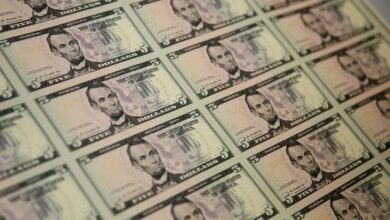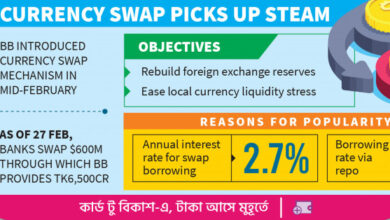The quest for the strongest currency remains a global trait

The pound was the world’s number one reserve currency from the 19th century to the first half of the 20th century, when it was overtaken by the US dollar. While the pound’s time at the top is long gone, it remains a force to be reckoned with
Currency strength is the relative purchasing power of a national currency when traded for products or against other currencies. It is measured in terms of the quantity of goods and services purchased and the sum of foreign currency received in exchange for one unit of the national currency.
Normally, increasing economic value of a currency will enable its spenders to purchase larger amounts of products, while its earners will enjoy further financial empowerment with more valuable income.
There are around 180 currencies that are recognised as legal tender around the world today, but only a handful is used for international transactions. The most powerful of these dominate global trade, finance and foreign exchange reserves.
In a recent report, Insider Monkey ranked the world’s top currencies based on their forex trade volume, status as a reserve currency and strength on face value in terms of exchange rate.
The U.S. dollar is currently considered as the strongest currency in the world. The U.S. economy has the largest consumer market, and the USD serves as the primary trade and reserve currency across the globe.
Around 60% of the world’s central bank reserves, 40% of debt and 80% of global trade is denominated in dollars. When the world experiences a crisis, everyone looks to the U.S dollar as a shelter from risks. However, many countries and foreign companies borrow in U.S dollars and earn revenue or taxes in their domestic currencies, therefore dollar strength increases default risk.
The US dollar is also the currency of choice for pricing oil and other commodities. It’s also the most traded globally, including a whopping 85% of all international forex transactions.
Launched in 1999 and adopted in 2002, the Euro is the official currency of 20 of the 27 EU member states. Although the currency’s name seems an obvious choice, several other monikers were also considered, including ecu, florin (suggested by the UK), and couronne. The euro is actually a somewhat distant runner-up, and while the Chinese renminbi is likely to ascend the rankings as Beijing’s de-dollarisation campaign continues, the currency has a very long way to go before it can be considered a contender to the US dollar’s throne.
The youngest currency in our round-up has been trusted the world over since its creation and is now the second most traded globally, making up 21% of all transactions. The euro is also the world’s second most important reserve currency, and 60 countries and territories outside the EU either use it or peg their own currency to it. The Japanese yen was adopted in 1871, with its name meaning “circle” or “round object”. The yen is one of Asia’s top currencies and the third most traded globally, as well as the world’s fourth most popular reserve currency. Like the Swiss franc, the yen is considered a safe haven asset.
The oldest currency in the world still in use today, the venerable pound sterling can be traced all the way back to the year 775AD, when the first “sterling” silver coins were issued. Approximately, 240 of these coins weighed a pound, and this “pound sterling” eventually became the currency of England and later the UK.
The pound was the world’s number one reserve currency from the 19th century to the first half of the 20th century, when it was overtaken by the US dollar. It’s now ranked fourth and is also the fourth most traded currency globally. While the pound’s time at the top is long gone, it remains a force to be reckoned with. A range of factors support the currency’s strength, from the UK’s stable governance and economy, which is the sixth largest in the world, to London’s status as a global financial hub.
The weaker yen has benefited the country’s service and tourism sectors. A dollar now buys 146 yen, up from 112 yen (or thereabouts) in 2017.
The Chinese renminbi – often referred to as yuan, which is the name of its primary unit – was created in 1948, a year before the founding of the communist People’s Republic of China. Fittingly, the Mandarin term “renminbi” translates to “the People’s currency”.
China’s formidable economic power has propelled the renminbi to the currency major league. It’s now the world’s fifth most traded currency and fifth most important reserve currency.
The Chinese government has embarked on a de-dollarisation mission as part of its bid to establish a multipolar world and is going all out to increase the renminbi’s global prestige at the expense of the US dollar. This could see the currency growing even stronger in the future.





